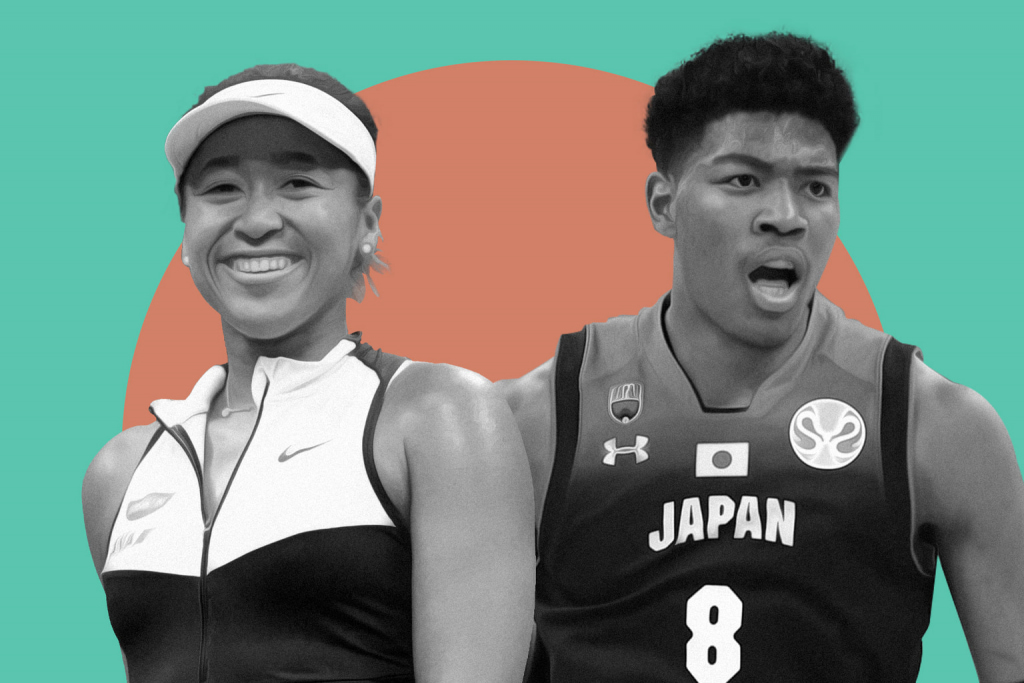Professional tennis player Naomi Osaka and Washington Wizards power forward Rui Hachimura lighting the Olympic torch and bearing Japan’s flag may not change Japan’s views on race, but “keep rising to the top” is the duo’s battle cry to others like them.
Watching Hachimura at the opening ceremony of the Tokyo Olympics was a preview of what it could feel like to be seen and accepted as you are, especially in a country where many still take pride in the supposed purity of the Japanese race. Hachimura aka ‘The Black Samurai’ made the red sun radiate. He represented his home country, in which many don’t view him as Japanese. And yet, Hachimura and Osaka, had half-Japanese, half- Black, Brown, white kids, adults and other minority groups in Japan levitating in joyful tears.
Hachimura is among the young-marginalized generation that is making Japan a more visibly diverse nation, despite itself. Thirty-five of the 583 members of Japan’s Olympic team are multiracial, not to mention, several of them are half-Black. To represent Japan on the world stage while not looking traditionally Japanese is a display of what the world may be shocked to see as Japan’s transcendence, whereas internally, Japan racks up piles of yen like fall leaves while scowling at the desecration of its usually curated image. Perhaps Hachimura and Osaka are a fulfilled prerequisite to performative diversity at the Olympics.
“Perhaps Rui and Osaka are a fulfilled prerequisite to performative diversity at the Olympics”
Many years before the Tokyo Games would ban athletes from wearing anything that said Black Lives Matter, African-American athletes Tommie Smith and John Carlos stood on the podium after winning gold and bronze at the 1968 Olympics in Mexico City. During the “The Star-Spangled Banner,” the two famously threw up Black fists.
Even Peter Norman, a white Australian silver medalist, standing alongside them on the podium, wore an Olympic Project for Human Rights badge. When Norman returned to Australia, his career was ruined for supporting his fellow athletes. People hated him. Describing Norman’s backlash, Carlos said, “If we [Carlos and Smith] were getting beat up, Peter was facing an entire country and suffering alone.”
Carlos’ sentiment could easily be applied to the bullying and torment that half-Japanese half-Black and Brown kids face in Japan. Last May, Hachimura’s younger brother, Aren Hachimura, a basketball player at a Japanese university, posted a screenshot of a racist message in Japanese that he received on Instagram, telling him that he and his brother were born by mistake and that they should die. In his public response, Rui Hachimura said that he gets racist messages “almost every day.”
Japan has put on a diverse face for the Olympics. Some ‘hafu’ say that’s not reality. https://t.co/Rc3B9BNrL8
— Baye McNeil (@BayeMcneil) August 1, 2021
For kids like Hachimura, becoming like the Black Samurai is something they can aim for. I imagine Japanese parents having to explain to their children why this fly-looking, 6 ft 8 brother was acting like he was one of them. As if he is from Toyama, Japan and his first language is Japanese.
They would be forced to tell their wide-eyed offspring that he is the first Japanese basketball player to be drafted into the NBA – in the first round. This brother already made history. Though likely few Japanese parents (except those with mixed-race kids) will explain to their children that Hachimura is just like them – Japanese.
Seeing mixed-race Japanese kids on the playground or at school isn’t as uncommon as it used to be. One in every 50 babies is born to a mixed couple in Japan. That’s 20,000 mixed babies born per year. It’s quite an increase compared to the late 1980s, when the number of mixed babies was one in every 135. How they are treated is an extension of Japan’s xenophobic view of who is or isn’t Japanese, regardless of a mixed person’s cultural identity.
If you don’t look, act or speak perfect Japanese, then you are trapped in the purgatorial category of “kokujin” (Black) or “gaikokujin” (un-Japanese). The irony is that Japan loves Black culture, but not Black people. They appropriate Blackness just like white America.
With all that said, I lived there for a decade. Change in Japan is a spinning rainbow on a frozen computer, but compared to the US, the country’s humanity is unparalleled. Americans getting out of quarantine is like wild animals with guns released from cages leading to lots of shootings.
Protecting my mental health was like dodging a cop’s bullet at close range
Watching the Tokyo Olympics from The States, I’m reminded that Japan may be xenophobic, but over there, I didn’t fear the harming of my body or the safety of my family. Still, protecting my mental health was like dodging a cop’s bullet at close range.
My 8-year-old daughter and I were like Venom, liable to lash out and snatch bodies into the abyss of our Black skin. At least our neighbors got somewhat used to us (it took years). In Japan, at our local Tokyo grocery store, my daughter, Kantra used to recognize Osaka on a cardboard cutout and point to her. “Dad, that’s Naomi Osaka,” she’d tell me.
Osaka getting knocked out of the Olympics was disappointing. Though witnessing her light the cauldron with my daughter and seeing Kantra smile and drop her head on my shoulder gave me hope that in the future Japan’s people will have a lot more Hachimuras and Osakas.
Two fingers means…
*Feature image by Rose Vittayaset
Updated On August 6, 2021








